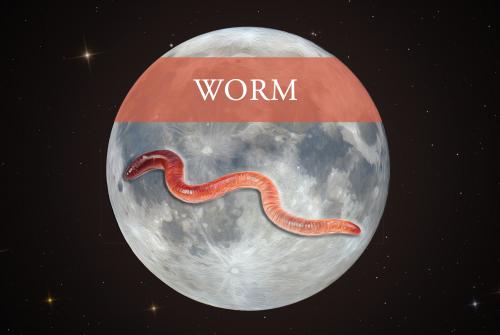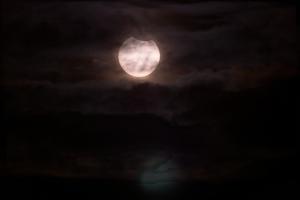Celebration of Space - March 22, 2024
On Monday, March 25, 2024 at 3:02 am ET, the Moon will yet again arrive at the point in its orbit around Earth where it is aligned with the Earth and Sun. This is the full Moon, and places the Moon on the opposite side of Earth than the Sun. On this night, the Moon will rise with the setting Sun, and set with the rising Sun, keeping the Moon in the sky for the entire nighttime period.
The March full Moon carries the moniker, the Full Worm Moon, which gives recognition to the worms and larvae that emerge from their winter abodes during this time of year. But in 2024 the March Moon carries another name, the full Paschal Moon, which is the first full Moon after the Vernal Equinox. The Equinox happened on March 19th for those on the east coast. It is also the Moon that marks the date of Easter. The first Sunday after the Paschal Moon will be the date of Easter. This makes Sunday, March 31 the 2024 date of Easter.
Additionally, this is the last full Moon before the fantastic solar eclipse that will occur on April 8, 2024. Solar eclipses occur during the new Moon, and Monday will place us 2 weeks out from the event. Though it is certainly too early to make a call on the weather, we are keeping our fingers crossed for a fantastic day under the eclipsed Sun. At Frosty Drew Observatory and Science Center, we will be closed, but we will be live streaming the event from different locations along the path of totality. It is along this path that viewers will experience a total solar eclipse. Our live stream will be published on our YouTube, and our website. As the date approaches we will post additional information on how to tune in.
For now, step outside this coming Sunday evening around 6:35 pm ET, and look due east towards the horizon to catch a stunning view of the full Worm / Paschal Moon rising. A true springtime celebration.
Evening passes of the International Space Station (ISS) continue this weekend and coming week. Catching a view of the ISS passing overhead in the evening is much easier on the family than trying to catch a view in the early morning hours. Even though this week’s scheduled passes are nothing to rave about, a view can still be had. So take a moment to put the following times on your calendar and set your alarms:
Fri, Mar 22 at 7:27 pm, starting in the NW, rising to 16°, heading towards the NNE
Sat, Mar 23 at 8:17 pm, starting in the NNW, rising to 15°, heading towards the NE, and into orbital sunset
Sun, Mar 24 at 9:06 pm, starting in the NW, rising to 23°, and into orbital sunset
Mon, Mar 25 at 8:18 pm, starting in the NNW, rising to 19°, heading towards the NE, and into orbital sunset
Tue, Mar 26 at 7:31 pm, starting in the NNW, rising to 17°, heading towards the NE
Wed, Mar 27 at 8:19 pm, starting in the NW, rising to 33°, heading towards the ENE, and into orbital sunset
Thu, Mar 28 at 9:08 pm, starting in the WNW, rising to 48°, and into orbital sunset.
Orbital sunset occurs when the ISS passes into Earth’s shadow. During that time, residents of the station will experience sunset, which happens every 90 minutes on the ISS. For observers on the ground, the station will appear to fade out of view. This is because we only see sunlight reflecting off of the station during a pass. Once the station drops into Earth’s shadow we will lose sight of it. So step outside one night this week and catch a view of humanity’s only space-based residence zooming by.
- Author:
- Scott MacNeill
- Entry Date:
- Mar 22, 2024
- Published Under:
- Scott MacNeill's Columns




